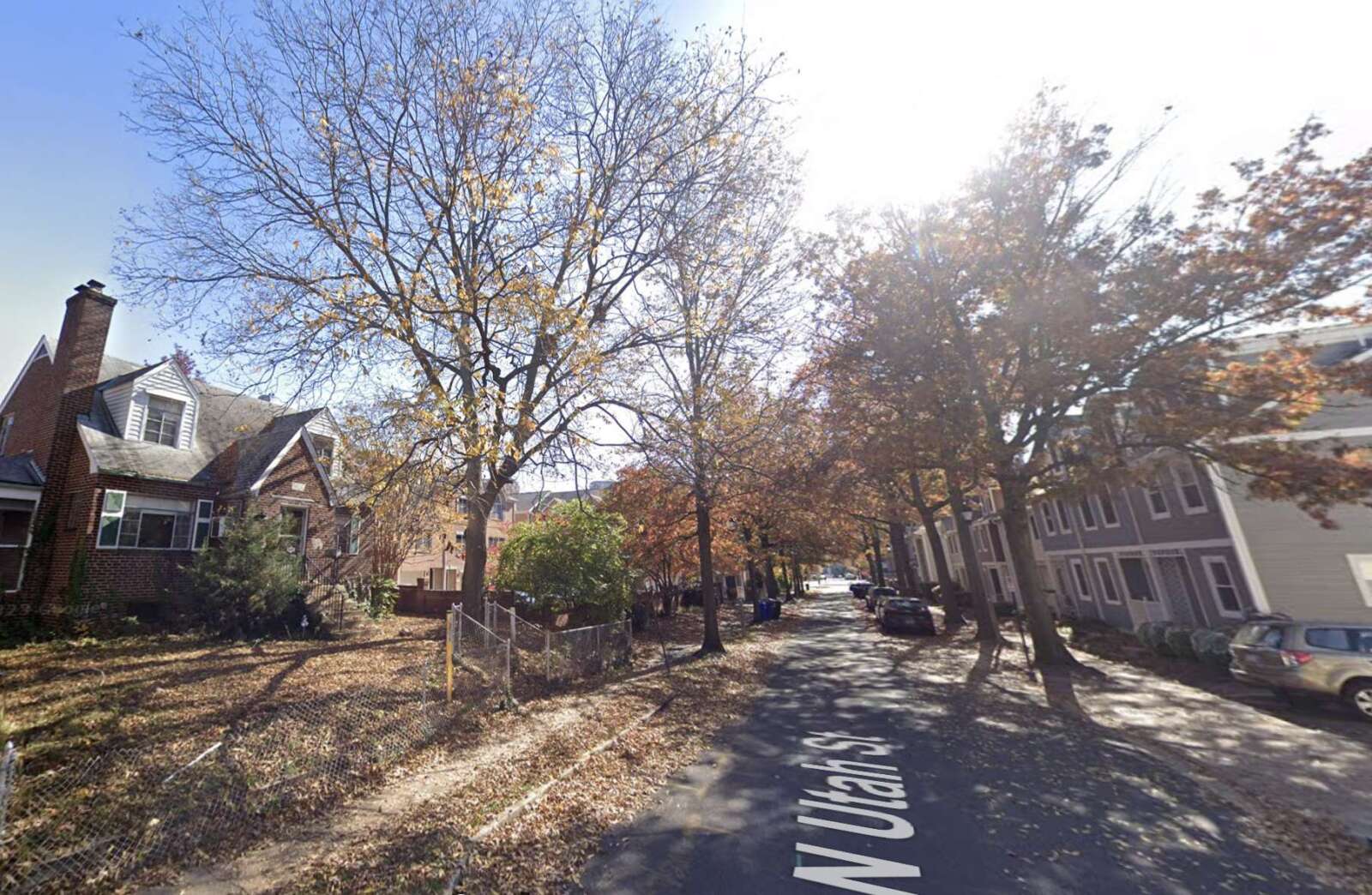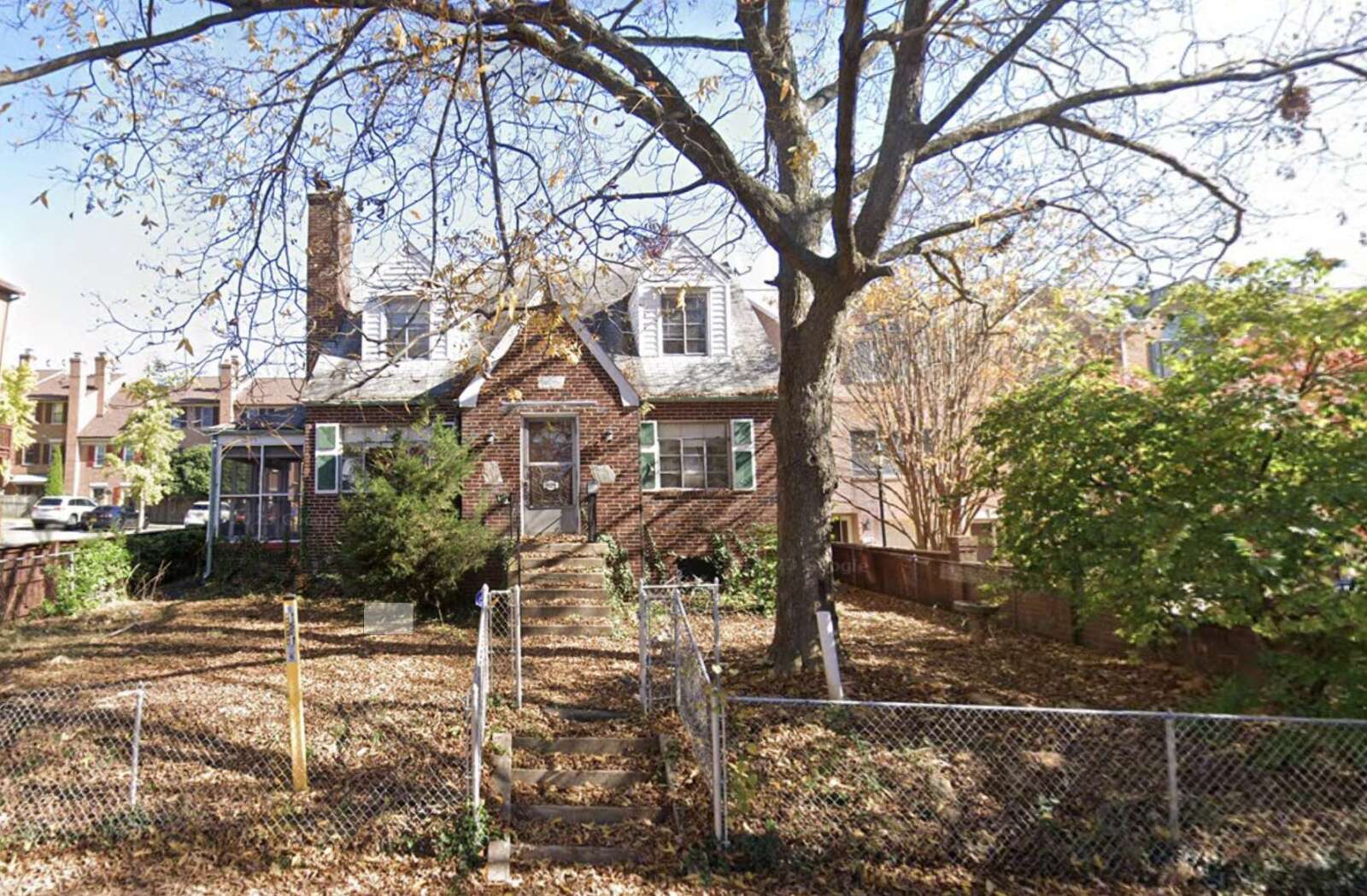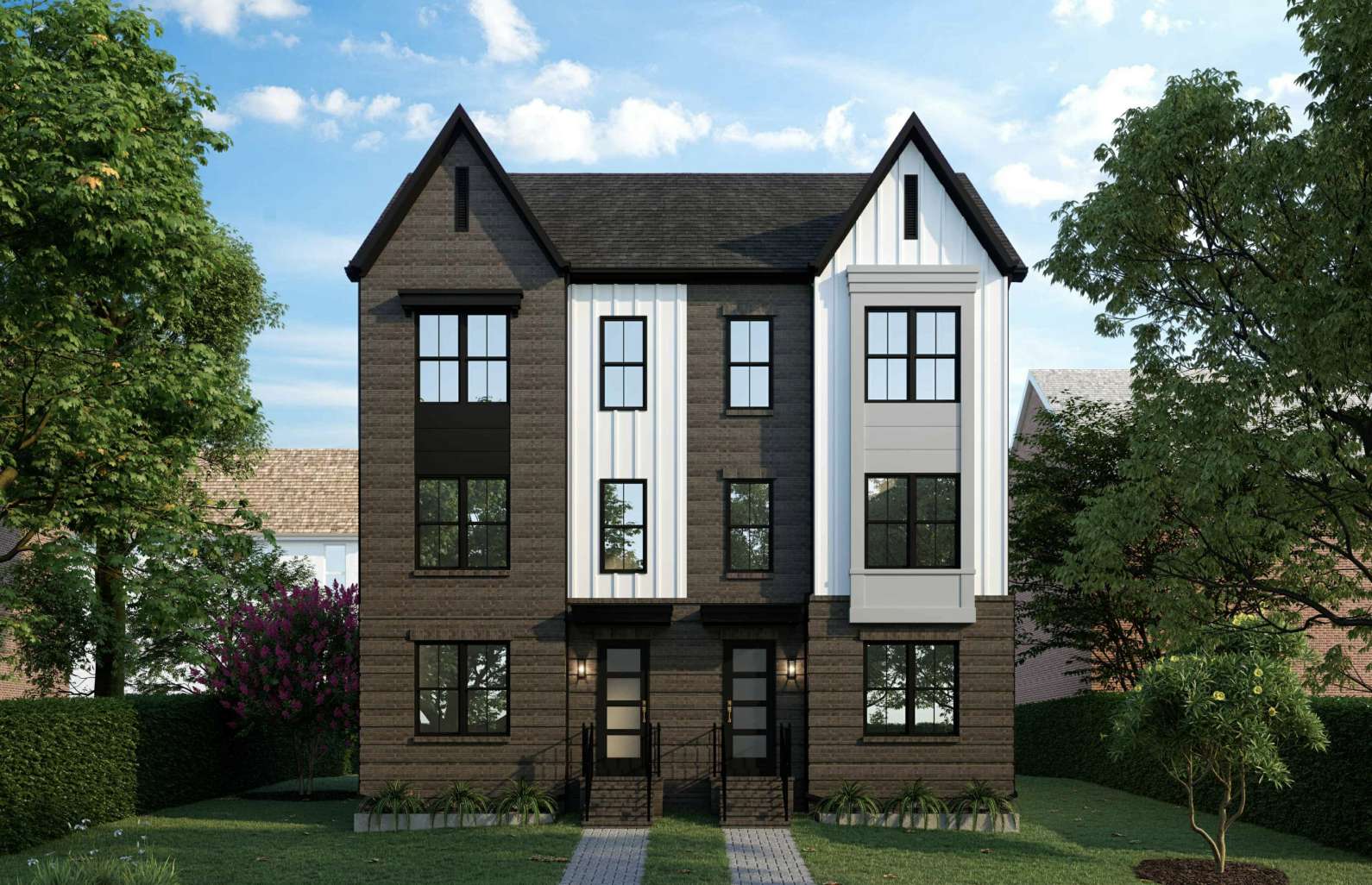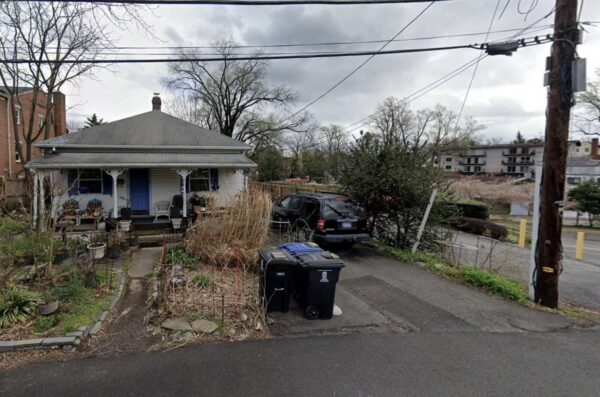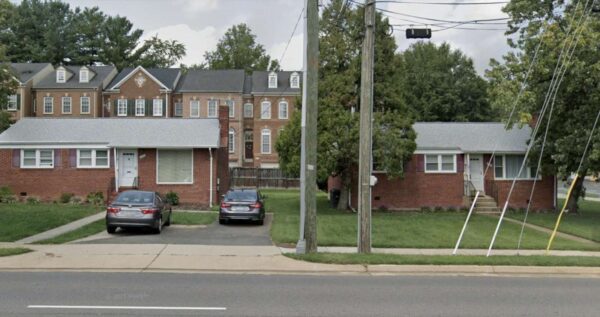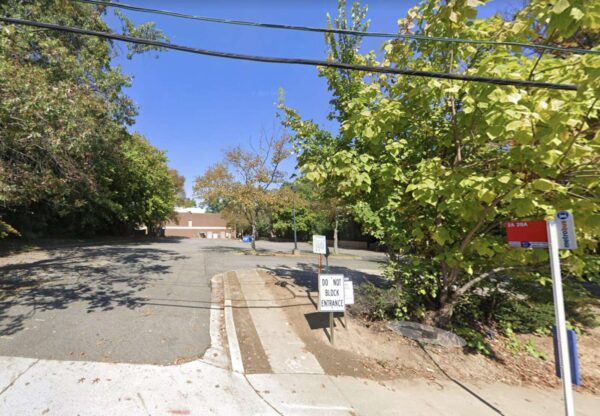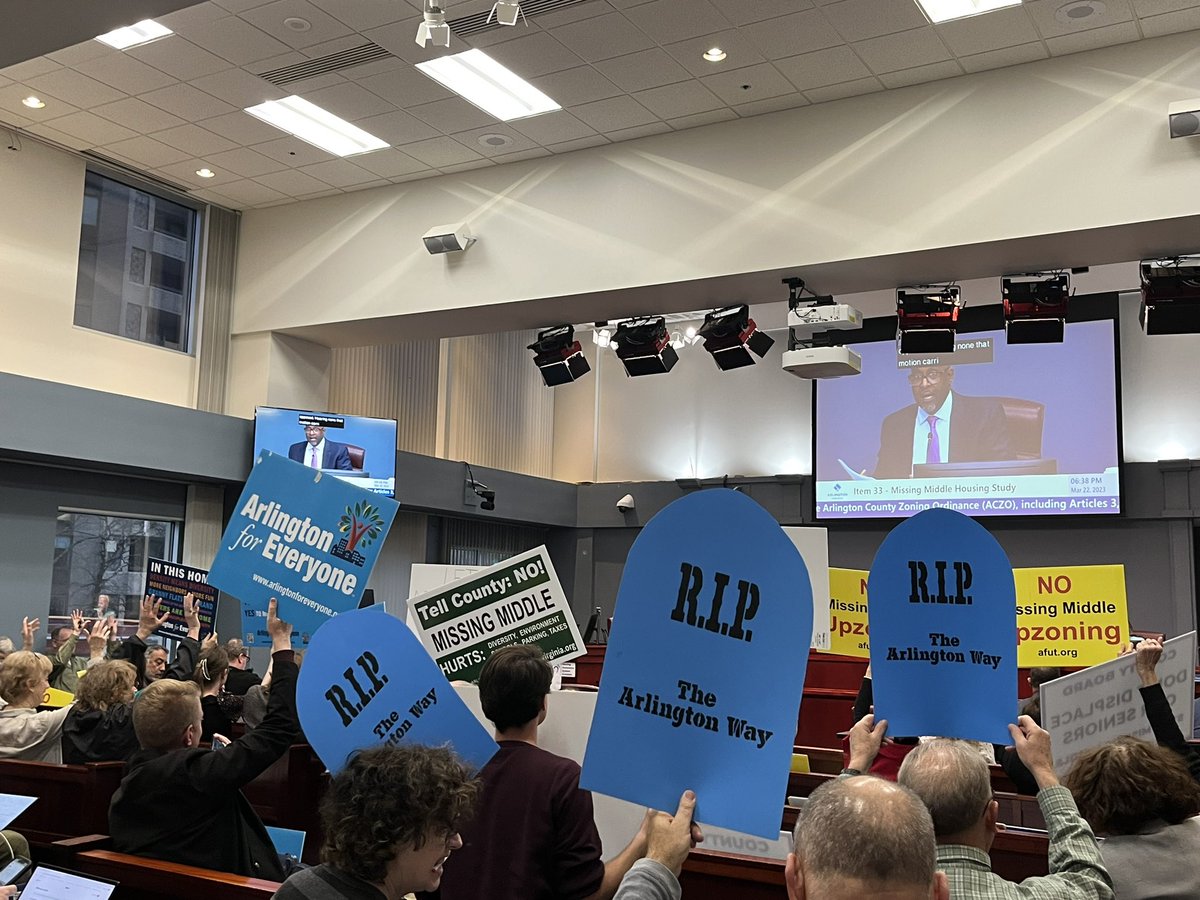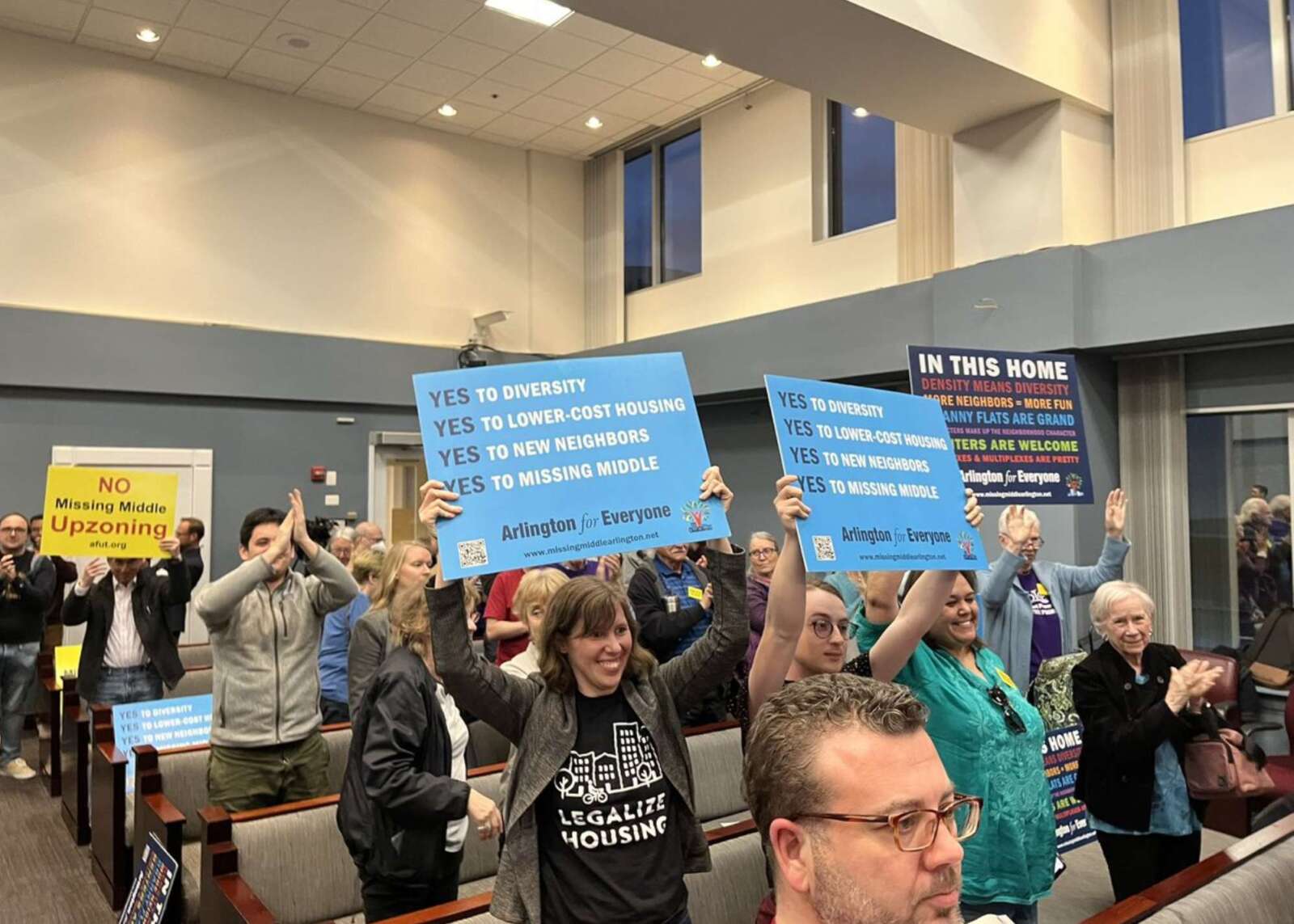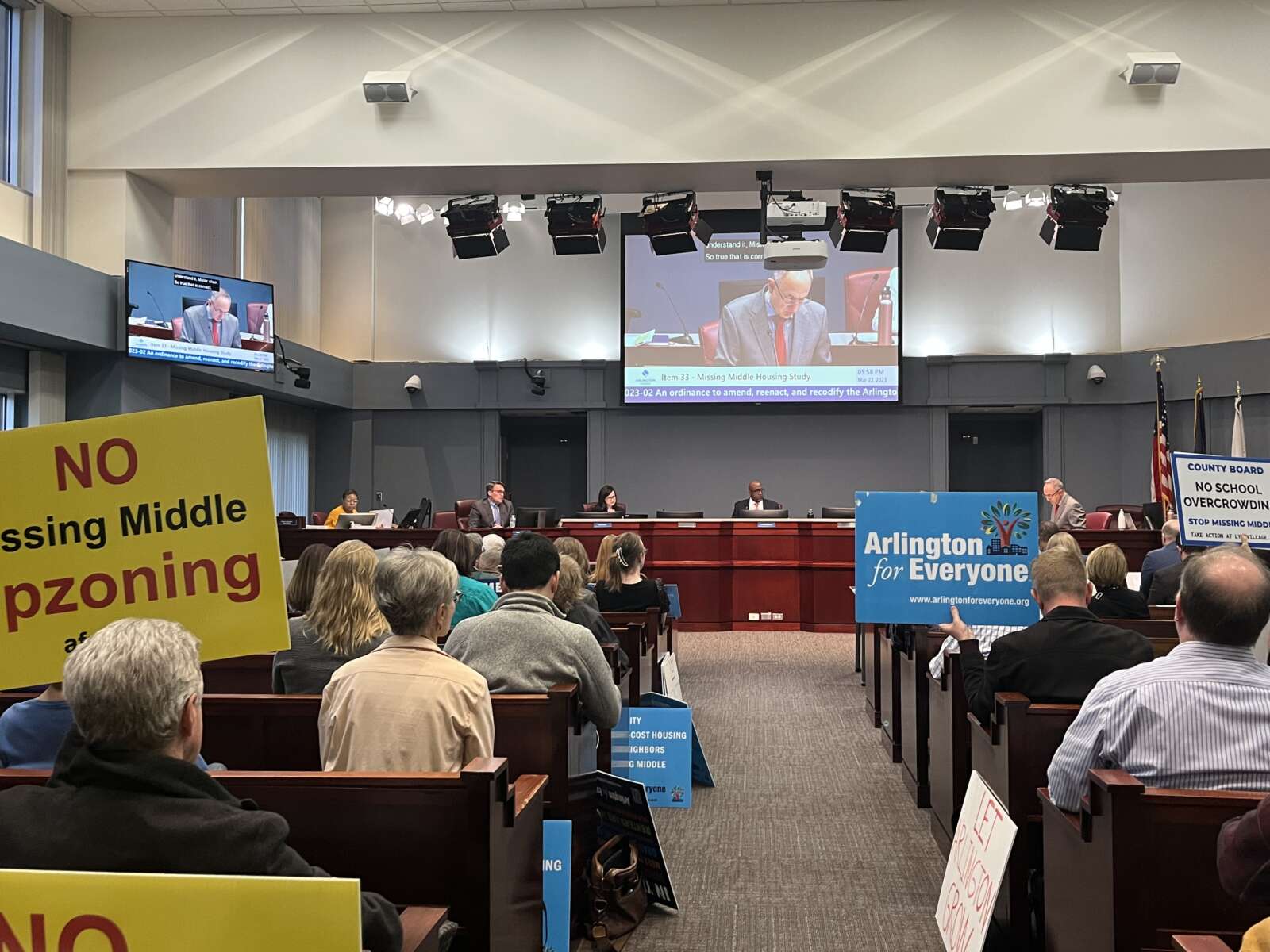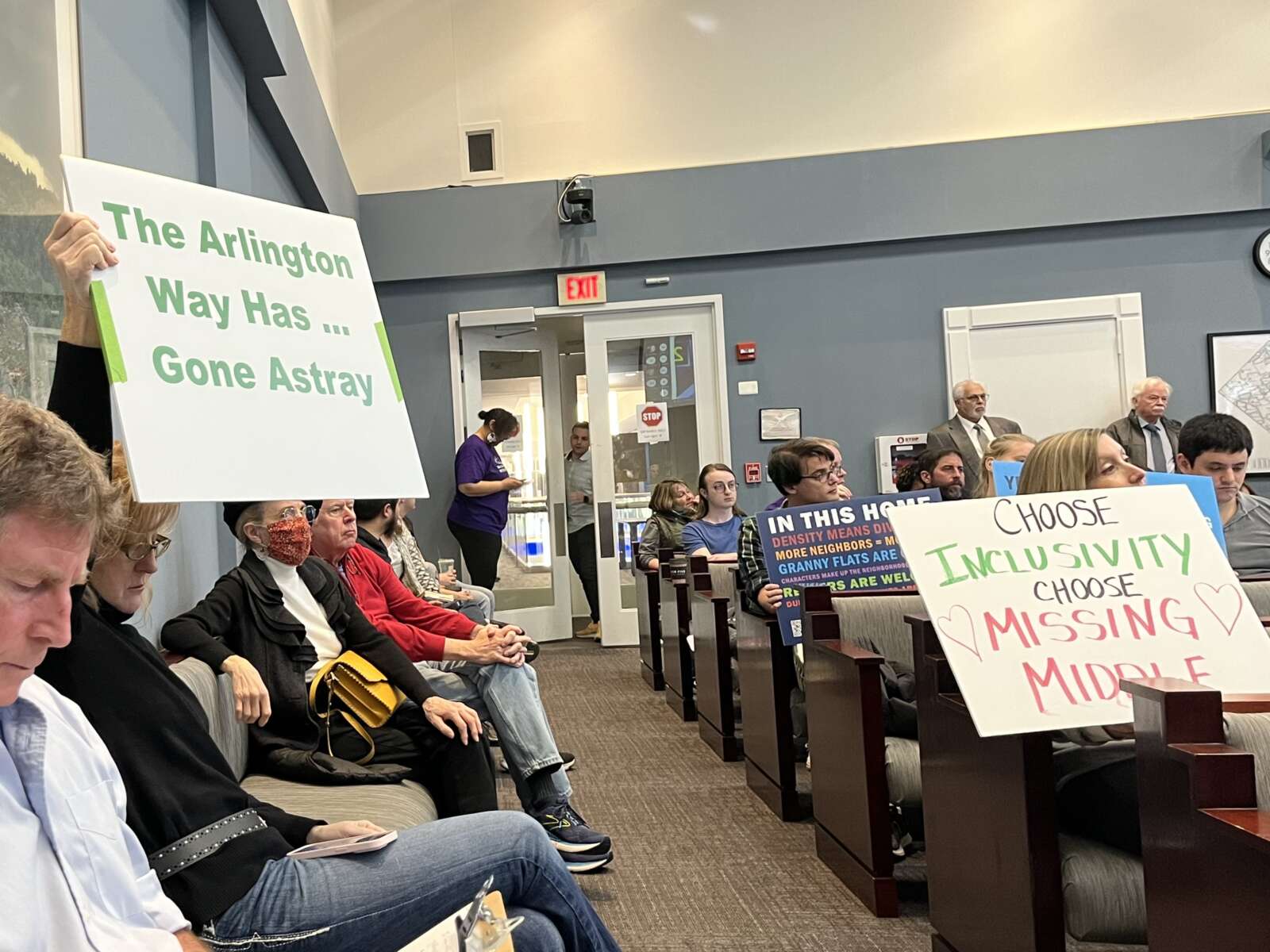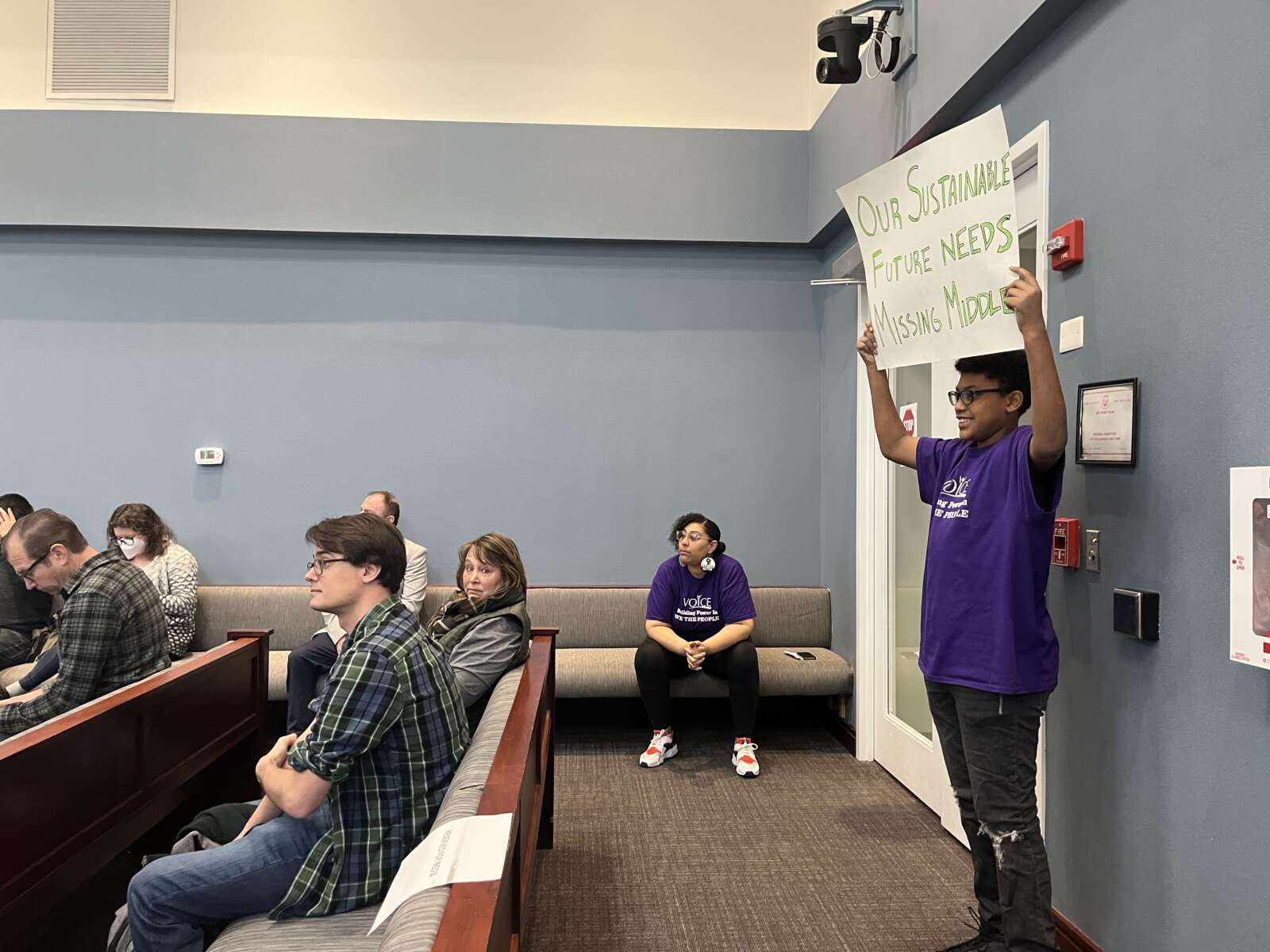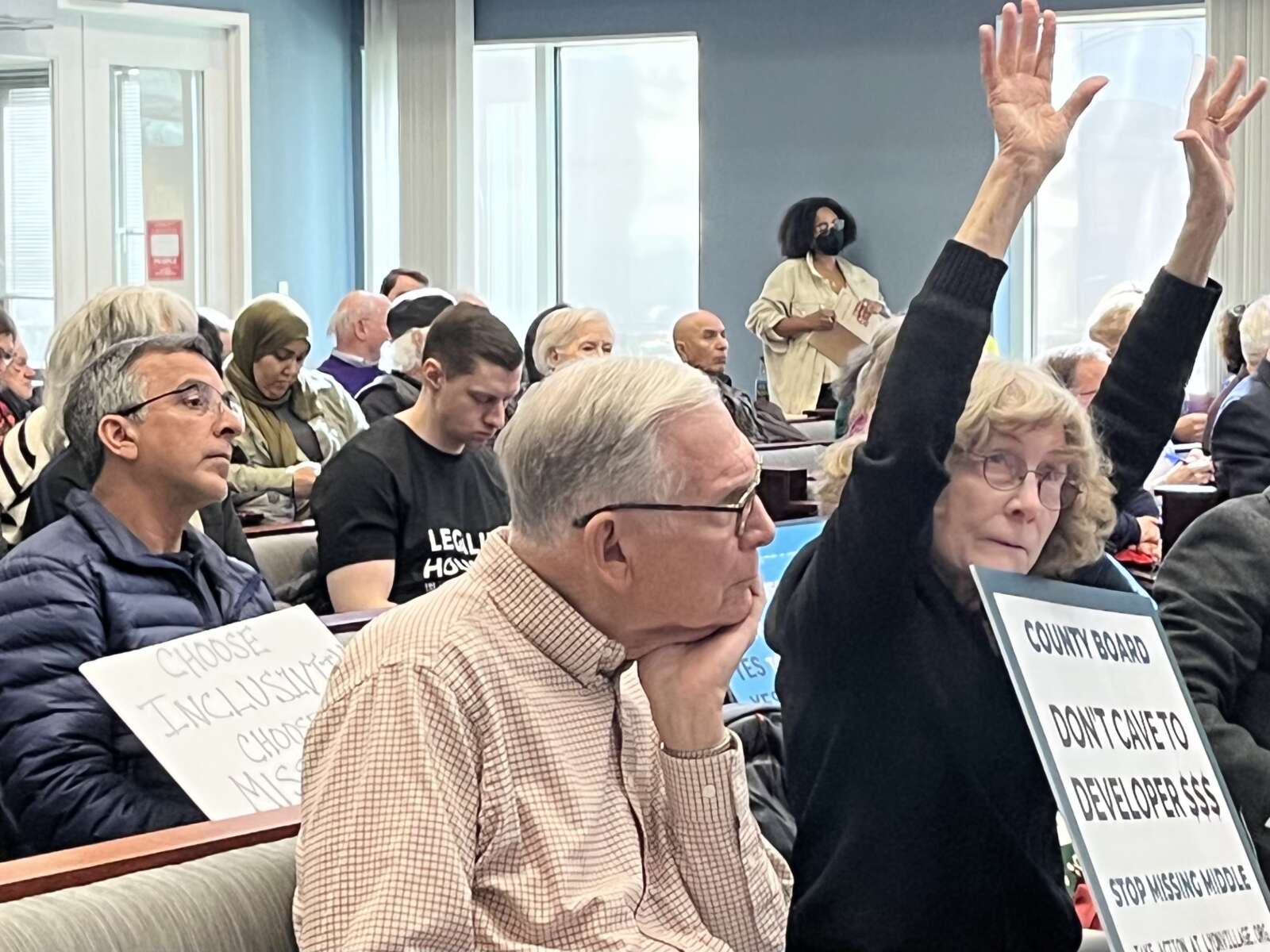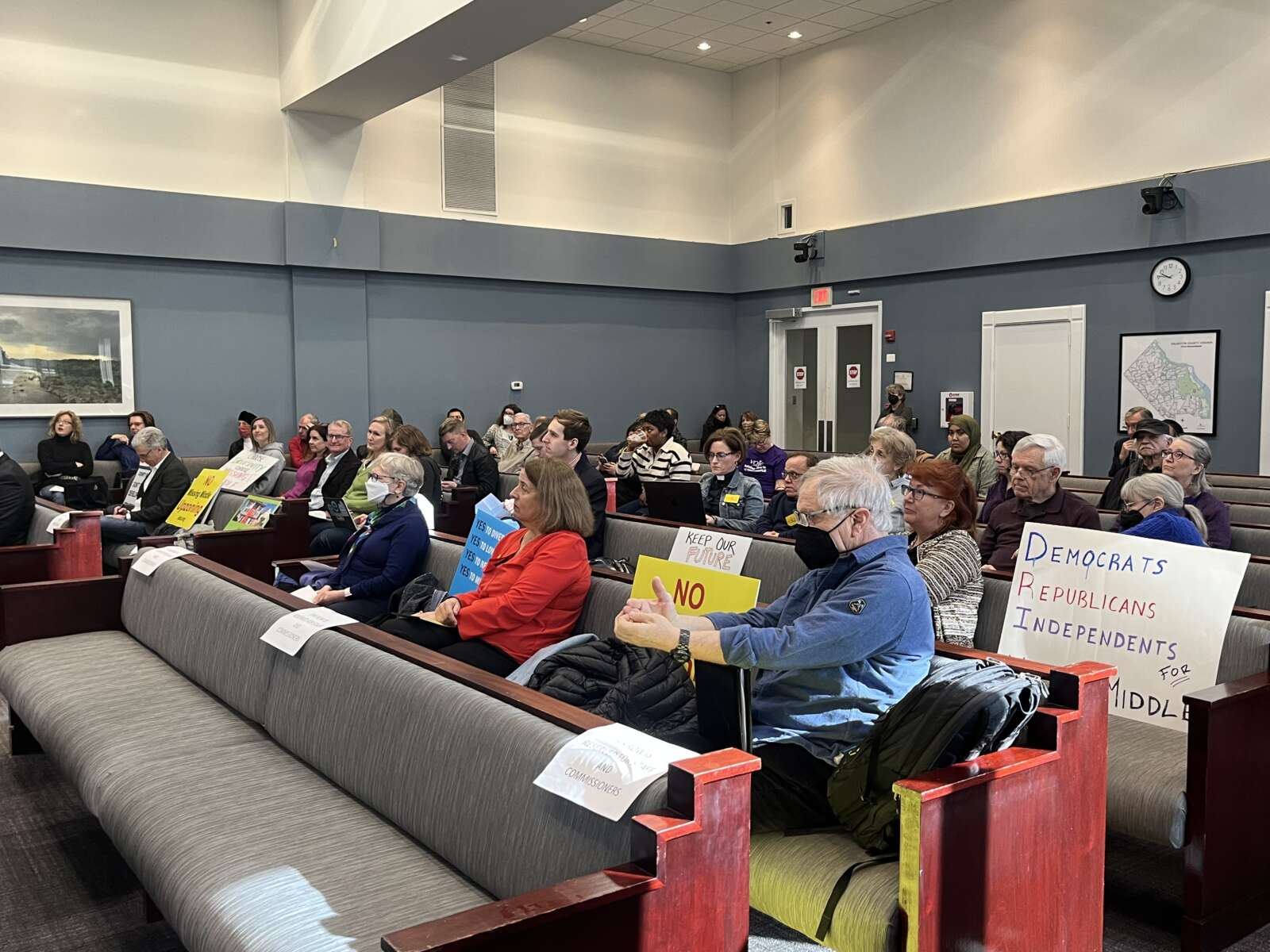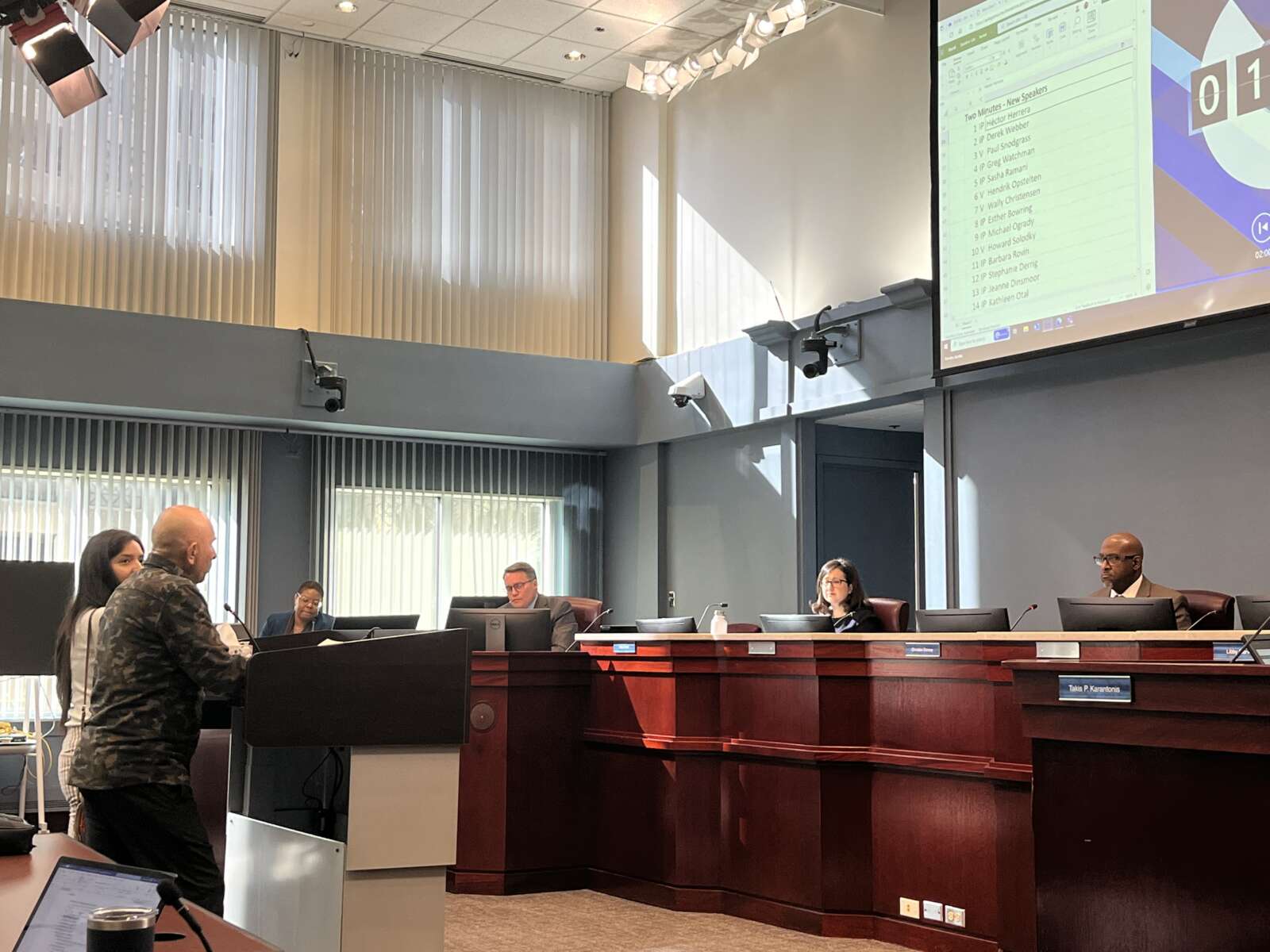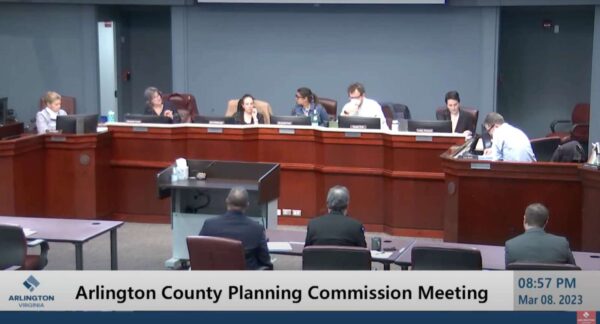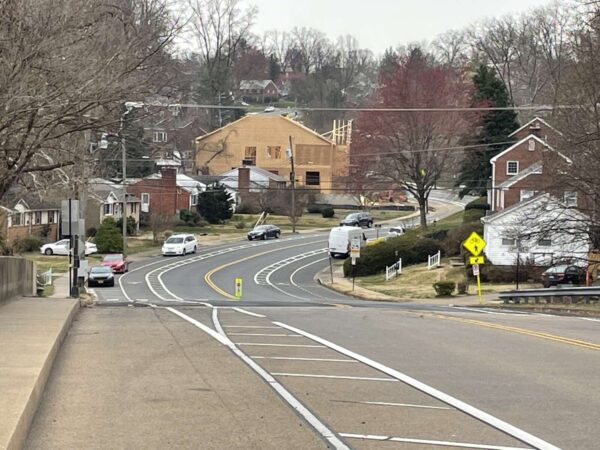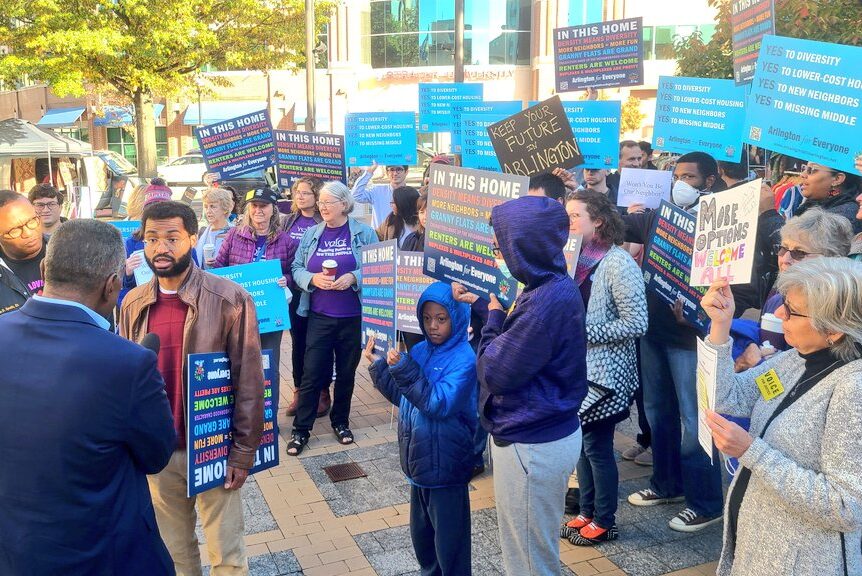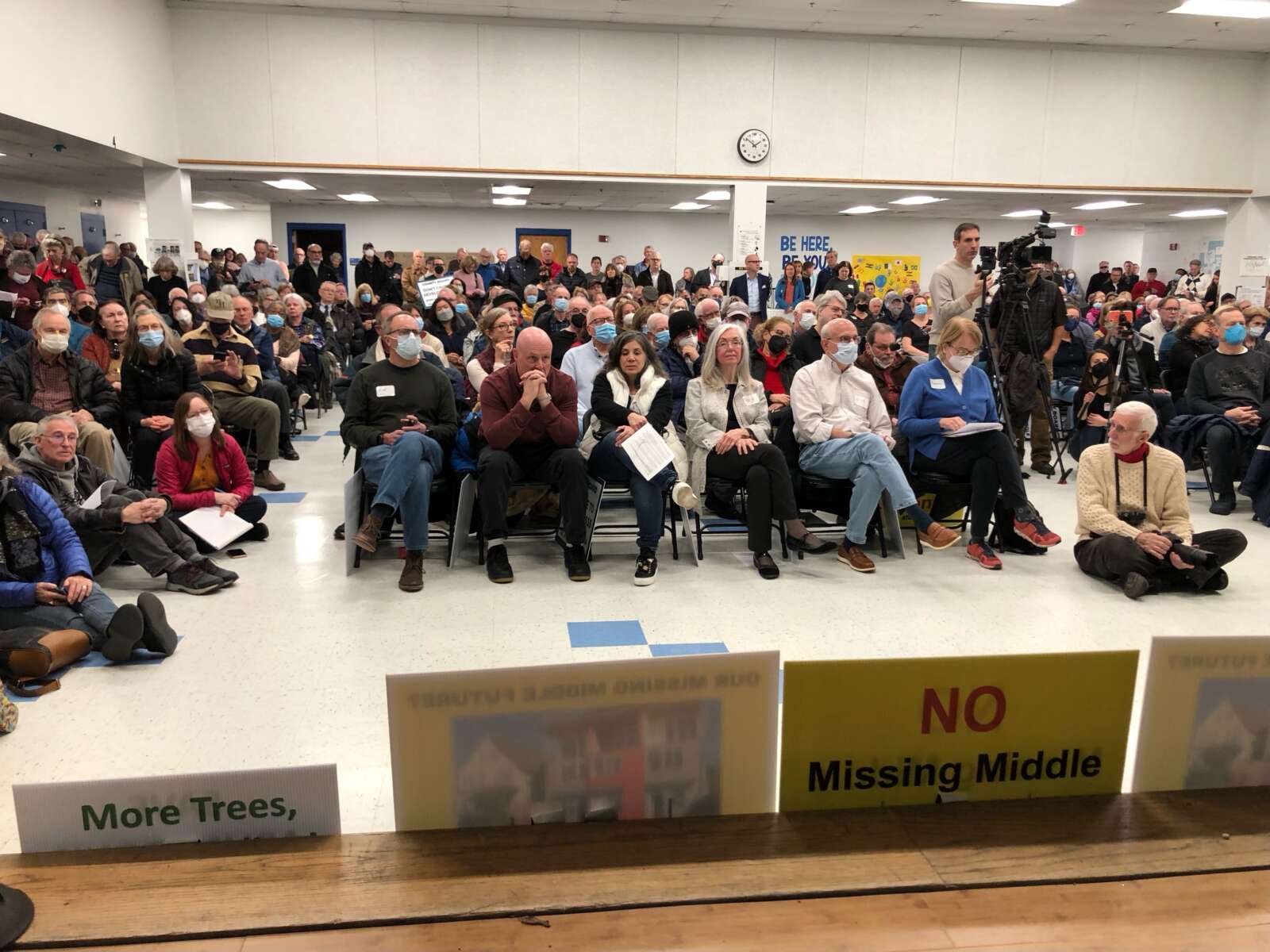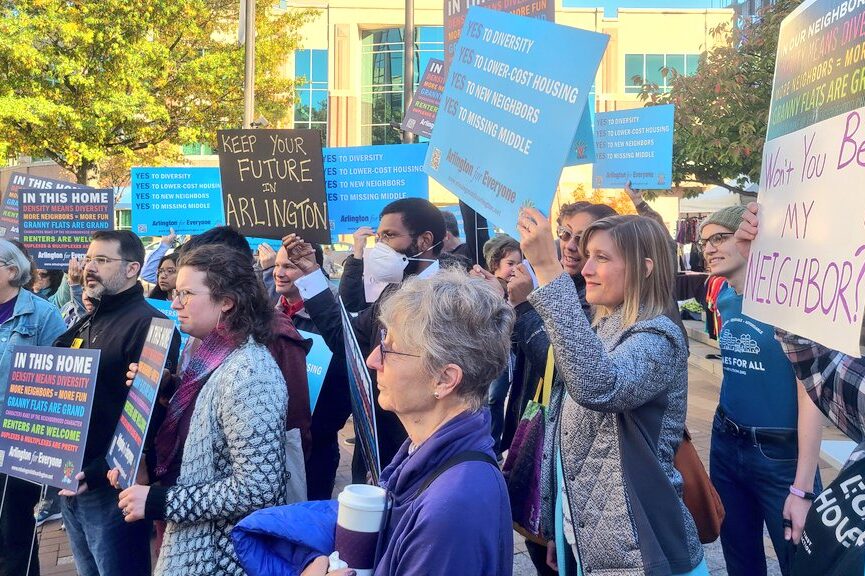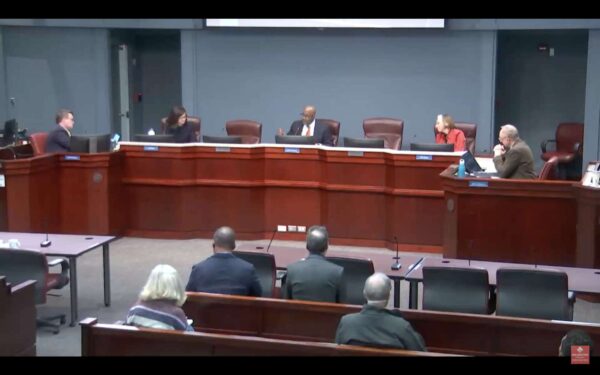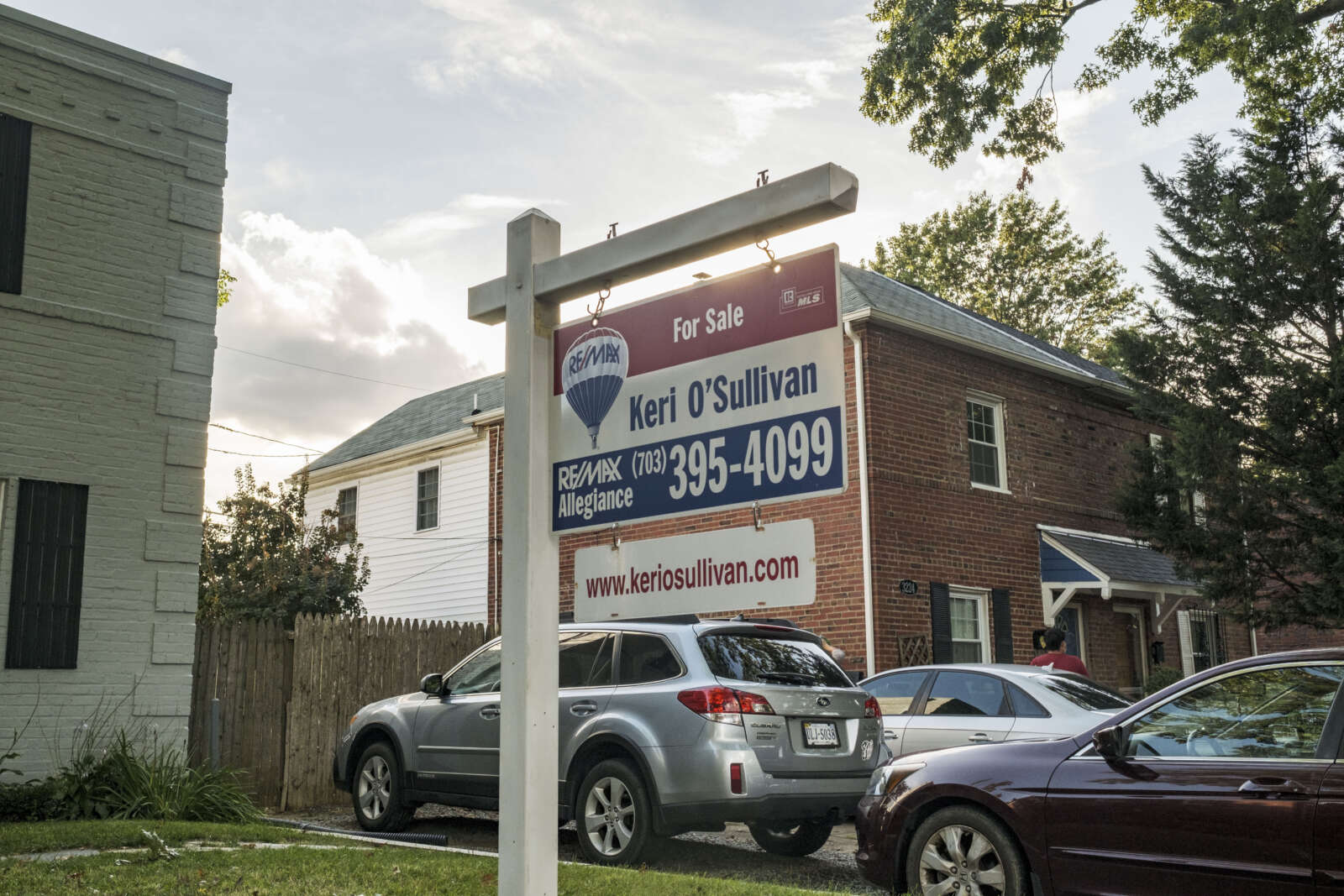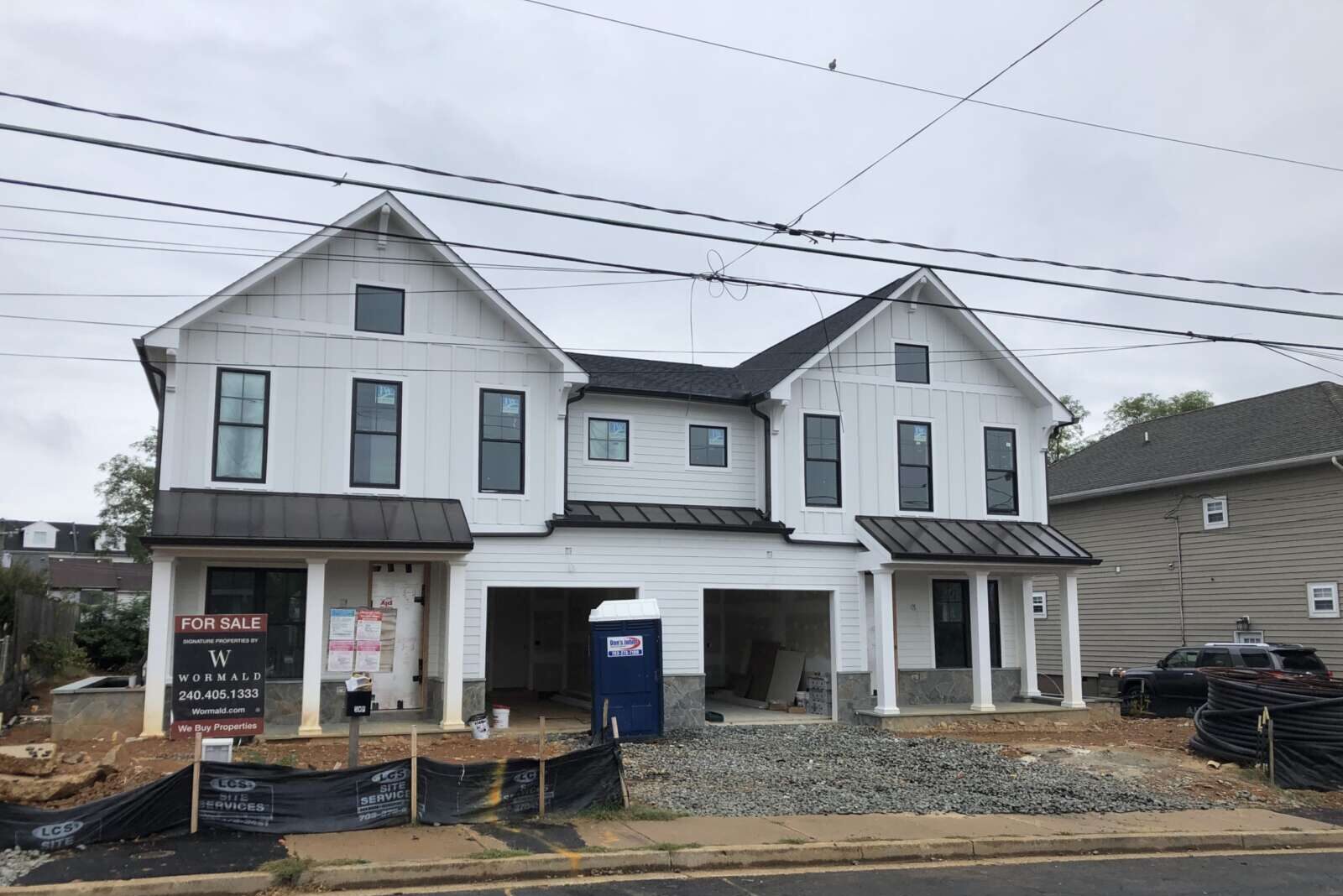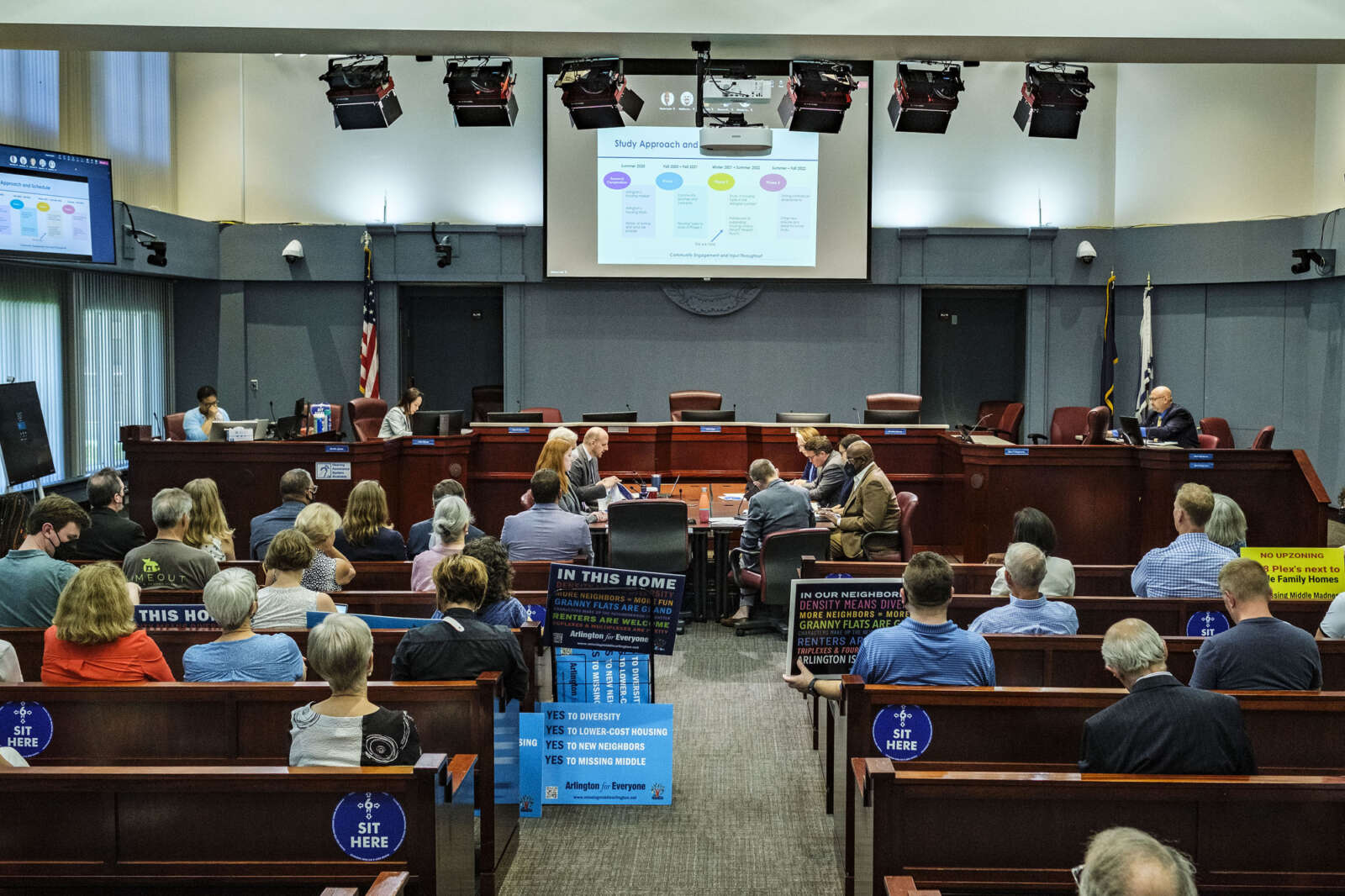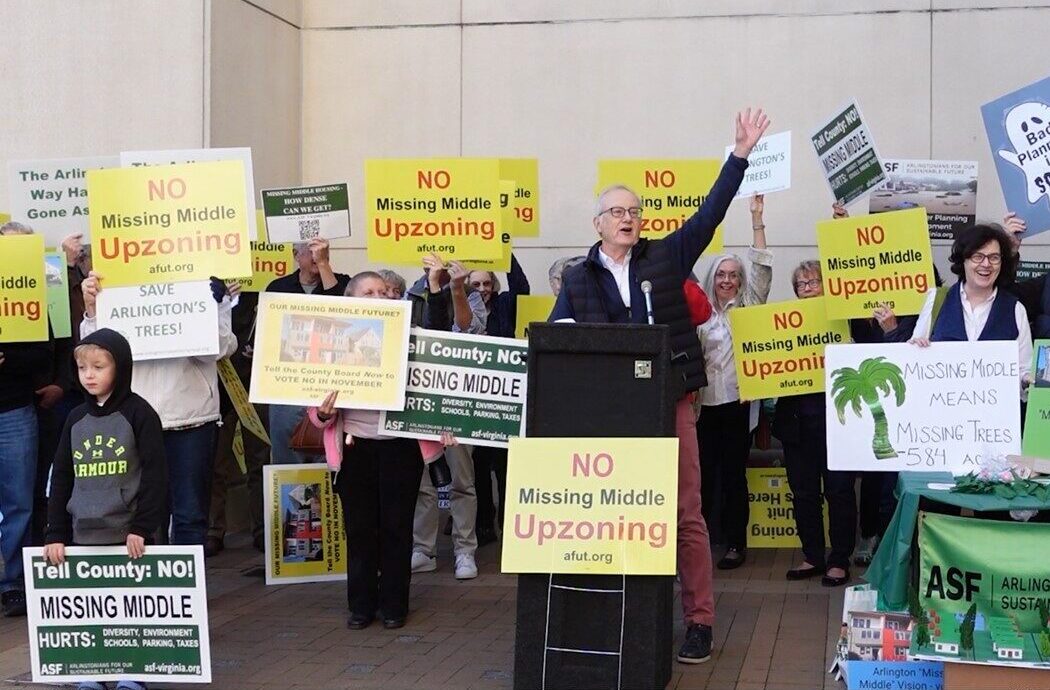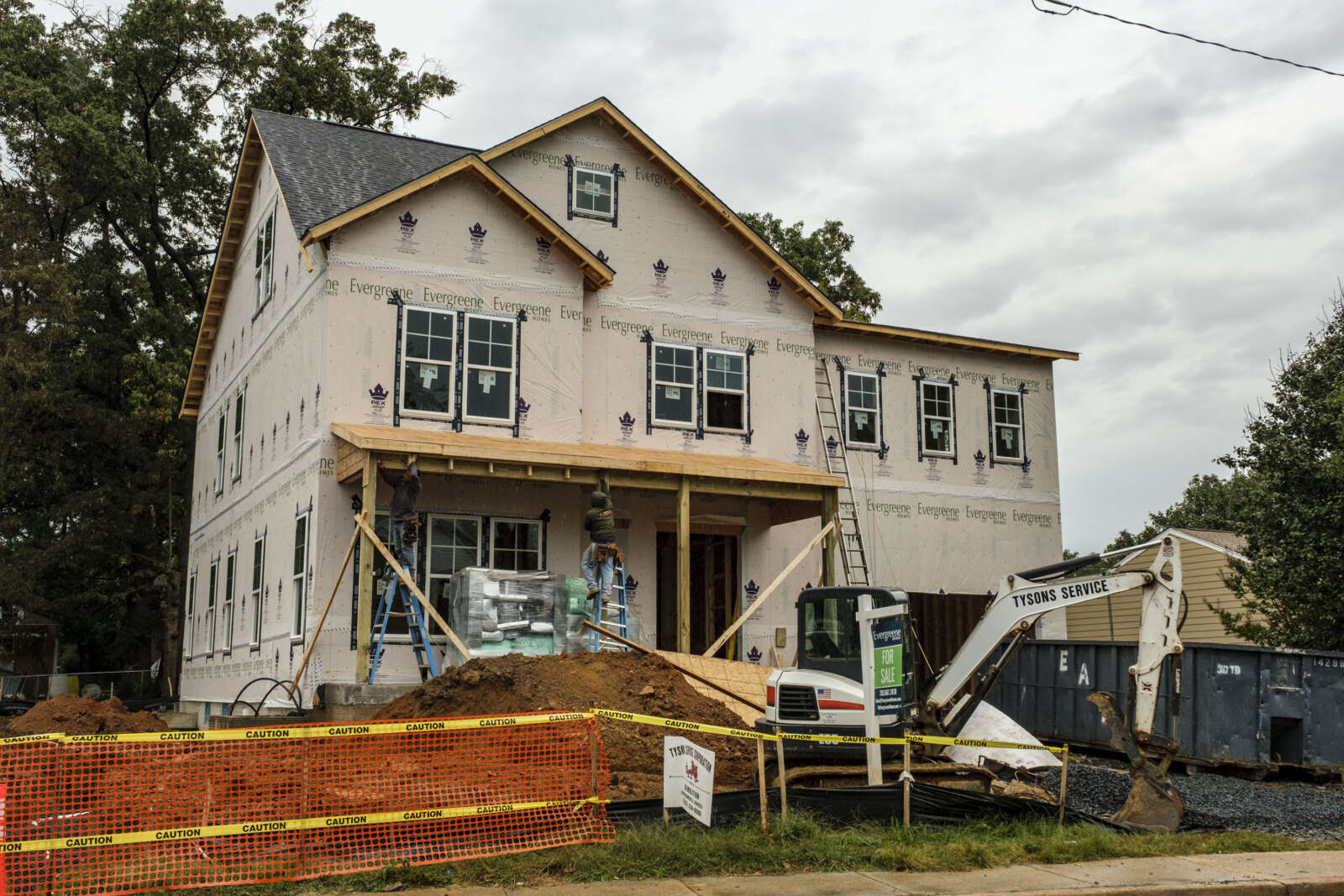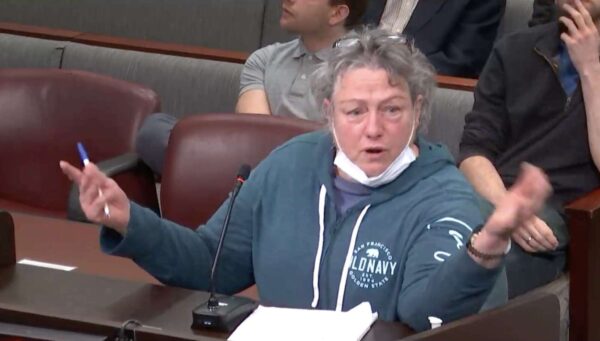(Updated at 12 p.m.) A lone, aging single-family detached home surrounded by townhouses and apartments and close to the Ballston Metro station could be redeveloped to house two families.
If the home at 1129 N. Utah Street were in any of Arlington County’s lowest-density zoning districts, the project could be done by-right — in other words, without seeking special permission beyond standard construction-related permits — starting this summer as part of the “Missing Middle” zoning changes.
Last month, the Arlington County Board unanimously approved the changes allowing the by-right construction of 2-6 unit dwellings, also dubbed “Expanded Housing Options,” in Arlington’s neighborhoods previously zoned only for single-family homes.
But D.C. area developer BeaconCrest Homes is not building in one of these residential zones, and the project instead has to go through the more time-consuming and expensive site plan review process. It’s somewhat ironic given that the zoning of the transit-accessible Utah Street property was intended to be more permissive than the lower-density residential zones now approved for Missing Middle.
“It’s kind of a funny thing: After all the effort put into Missing Middle — that only impacts R zones,” project representative Robby Malm tells ARLnow, musing that the county could have could have incorporated the by-right flexibility afforded by the changes in townhouse districts.
The home is located in a “Townhouse Dwelling District” (R15-30T). This district encourages townhouses as a transition between tall apartment and commercial buildings within Metro areas and neighborhoods with single-family detached housing. Anything beyond a single-family detached home, however, requires a county-approved special exception site plan.
“This aspect of the R15-30T district isn’t really a quirk; rather it’s the express permissions of the district, which was intended to allow townhouse developments in Metro Transit Corridors and on properties with ‘low’ residential and ‘low-medium’ residential General Land Use Plan designations,” Dept. of Community, Planning, Housing and Development spokeswoman Elise Cleva tells ARLnow.
Since districts such as this one already allow Missing Middle housing forms (albeit not by-right) and regulate their height, setbacks and other characteristics, they were not studied as part of the zoning code updates, says Cleva.
Malm says he met with county staff and they have been helpful during the process but he feels he did not get a clear reason why townhouses and semi-detached duplexes cannot be built by-right in townhouse districts.
“They politely shrugged their shoulders and said, ‘That’s the way the code is written,'” he said. “They couldn’t give us a rationale as to why the code was written that way.”
Typically, Cleva says, R15-30T properties were rezoned from a lower-density zoning district and then associated with a site plan to allow for the townhouses to form a transition.
“As County planners analyze the site plan application for 1129 N. Utah St., they’ll learn more about the history of that parcel,” she wrote.
Malm said his firm deliberated building a single-family detached home but decided the additional time, cost and uncertainty involved in a site plan process to build a side-by-side duplex is “what the property deserves, given where it is located and its proximity to everything Ballston has to offer.”
He says he hopes for a speedy process.
“Because of where it’s located and the feedback we’ve received, we don’t foresee a lot of pushback,” he said.


